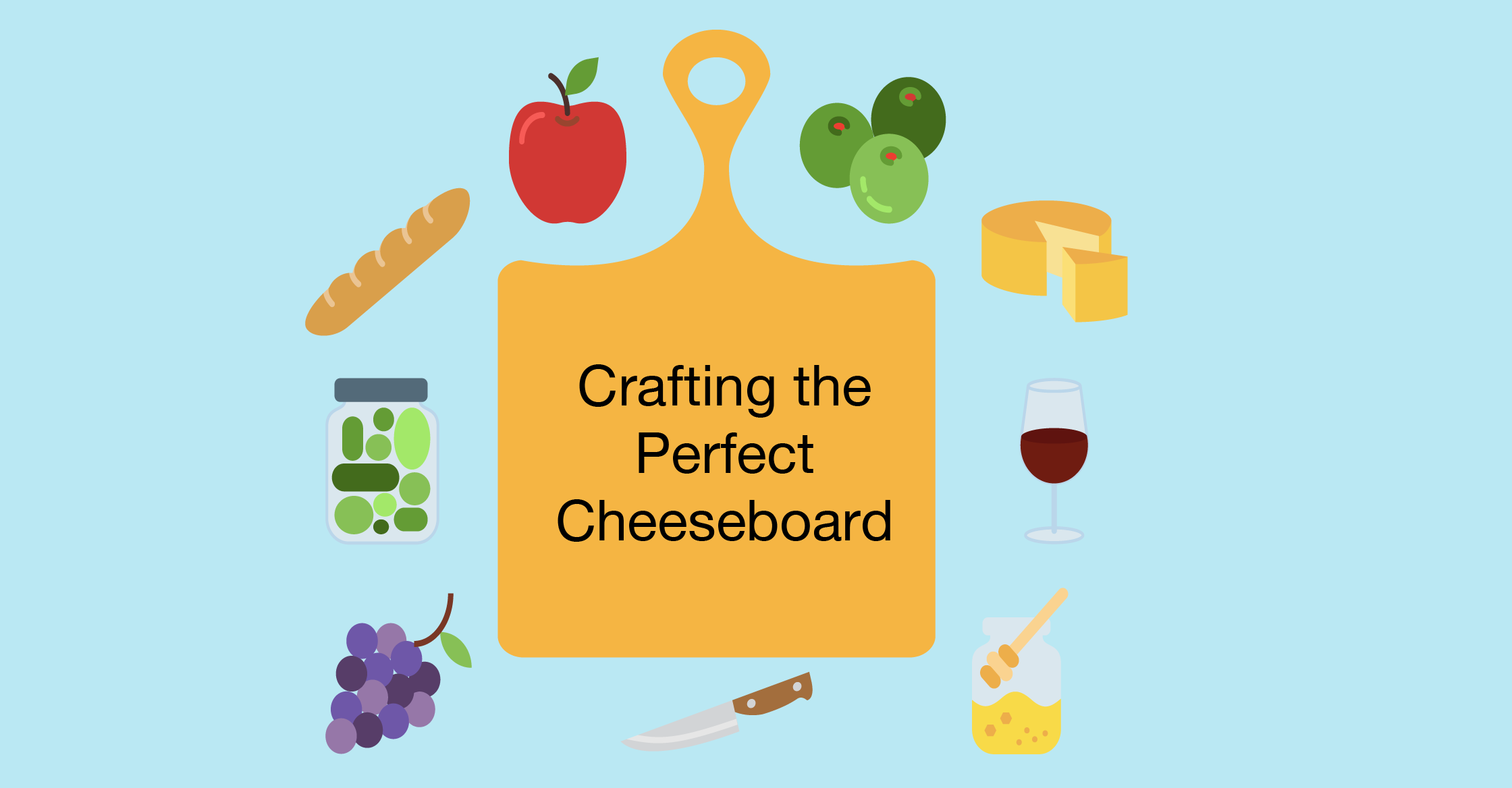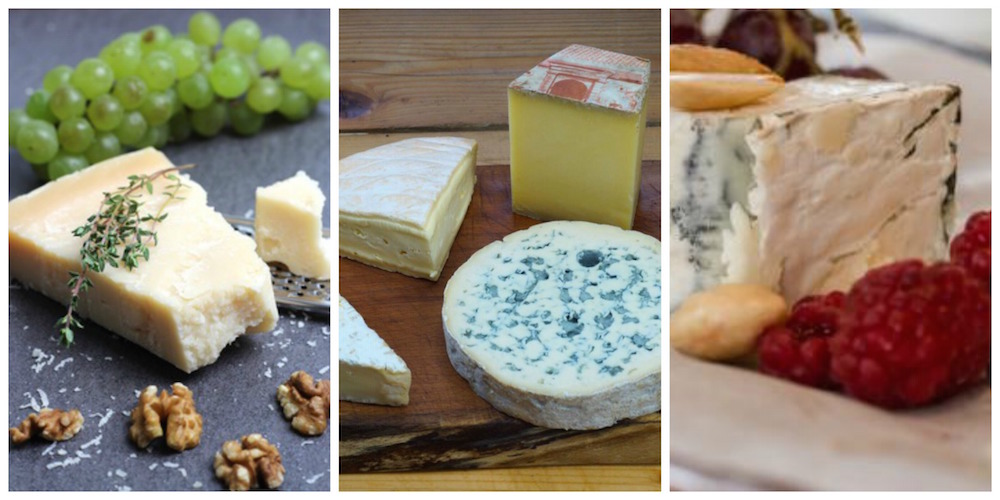Crafting the Perfect Cheeseboard

Cheeseboards make versatile starters and a cheese course is a brilliant way to top off a delicious dinner. Putting together a cheeseboard can seem complicated. However, it doesn’t need to be this way! In this article we share some simple tips and tricks to point you in the right direction, and help you create a simple, but delicious cheeseboard.
Choosing the cheeses:
Lets start with the basics, there are four main categories of cheese:

When choosing the cheeses for the cheeseboard, use a mix of cheeses (both styles and milk) from the above categories to avoid the flavours running together. Just because a cheese is well known, doesn’t mean you shouldn’t serve it. Using at least a few cheeses your guests have heard of is a good way to make sure people enjoy the cheeseboard. Though adding something new into the mix will help introduce people to cheeses they may not have tasted before. However, do not go overboard with the cheeses, between three and five is a good number.
There are no explicitly “right” and “wrong” cheeses to include since personal preference plays a large role in choosing cheeses. Both McCambridge’s of Galway and Morton’s in Dublin recommend avoiding industrial and generic blocks cheese. Lots of cheddars fall into this category, so if you want to include a cheddar on your cheeseboard, go for a local Irish farmhouse cheddar. Purchasing local cheese when possible is always a good idea, especially here in Ireland as there are so many wonderful Farmhouse cheese options. Cheesemongers are your friend and spending time talking with them about cheese will bring your cheeseboard to a new level.
Choosing the pairings:
1. Bread and crackers:
Using a variety of breads and crackers is a good way to give more texture as well as flavour variety. A crusty baguette, assorted crackers, and breadsticks are good places to start. It can be tempting to add a lot of bread and crackers to the board, but Emma the cheesemonger from Morton’s explained why that is not a good idea:
“Bread can just fill people up too much and the eating of the cheese is the important thing! Where bread comes into plays is with baked cheese a mini camembert of mont d’or.”
2. Condiments & Preserves:
Mustards, jams, chutneys, and honey are all excellent ways to sweeten or spice up a cheese. Fig compote is a favorite of Morton’s as it goes with many cheeses. The sweetness of honey compliments the intensity of blue cheese, but also pairs well with most soft cheeses, so we highly recommend including honey on your cheeseboard. One of our favourite blue cheeses is Cashel Blue Cheese. Hailing from Beechmount Farm in Co. Tipperary this cheese has a wonderfully rich, full and strong flavour. Additionally, including pickled vegetables or grilled onions help add acidity, crunch, or sweetness. The great thing about jarred goods is that they can be reused many times and do not take much time to prepare.
delivered weekly to your inbox!
[ninja_forms id=162]
3. Nuts and fruits:
Adding a crunch to the cheeseboard will help bring all the components together. Nuts such as marcona almonds, pistachios, or as McCambridge’s of Galway recommends, walnuts, pair nicely with most cheeses and add that desired crunch. Also having a display of both fresh and dried fruit including apples, figs, pears, cherries, and apricots gives a sweet essence to the cheeses and can act as a palate cleanser between cheeses. Sheridans stresses the importance of palate cleansers to keep the pungency of cheese from mixing. Fresh fruit, specifically apples and pears, also enhance the experience when eating blue cheese.
Similarly to the cheeses, do not add too many pairings. Stick to no more than two or three of each type. A good rule is to just make sure the board itself does not look overcrowded and that there is adequate space between pairings so that nothing is mixing or looking messy. As a final note on pairings, Dominique Dorman of Sheridans, stresses the golden rule of pairings:
“Good cheese is also delicious by itself and I don’t think the accompaniment should be allowed to take from that but only to add to it.”

Assembling the Board:
1. Space:
As mentioned above, spacing is crucial for a successful cheeseboard. It is better to have fewer components that compliment well than too many that crowd each other on the board. For the cheeses specifically, make sure to spread out the cheeses, especially the more potent ones, to keep the aromas from overpowering each other. For example,
“a delicate goat cheese that follows a pungent blue will be reduced to a texture rather than a balance of texture and flavour”
St. Tola Irish Goat Cheese is a favourite of ours – the original has a lovely mellow and warm flavour. Spreading out the pairings in between the cheeses will help suggest which pairings to use for which cheese, particularly if some are meant for certain cheeses.
2. Knives:
One knife does not fit all cheeses. Firmer cheeses require pairing knives or cheese planes, whereas softer cheeses can often be cut with a butter knife. Before putting any cheese on the board, cut it into smaller pieces so that it is more manageable for guests to cut slices or slivers off. Providing a different knife for all cheeses is a good way to avoid any cheese mixing as well.
3. Temperature:
Health safety is important, but cheeses can be left out for hours and hours without needing refrigeration. Some hard cheeses never need to be refrigerated! For best results for a cheeseboard, take the cheeses out of the fridge an hour before serving. The cold restricts the flavours and makes cheeses harder and less creamy.
We hope that following some of these simple techniques will help shatter any barriers and fears about making a cheeseboard. The more experimenting you do with various types of cheeses and accompaniments, the easier it will be to figure out exactly what you like!
delivered weekly to your inbox!
[ninja_forms id=162]
